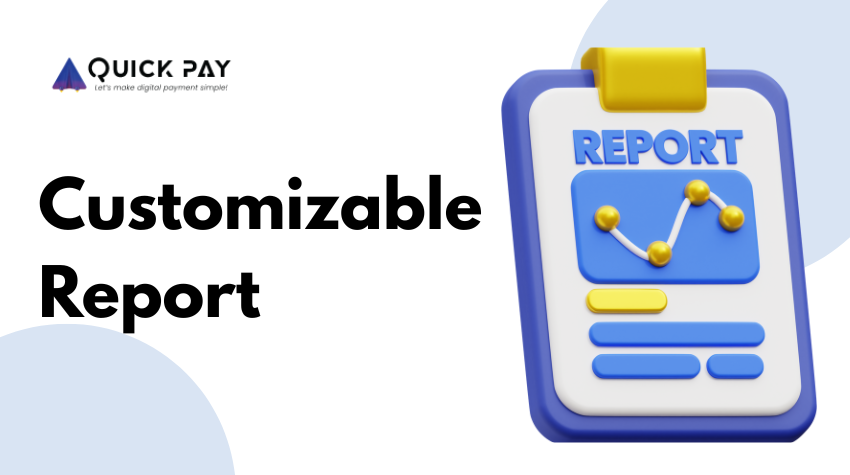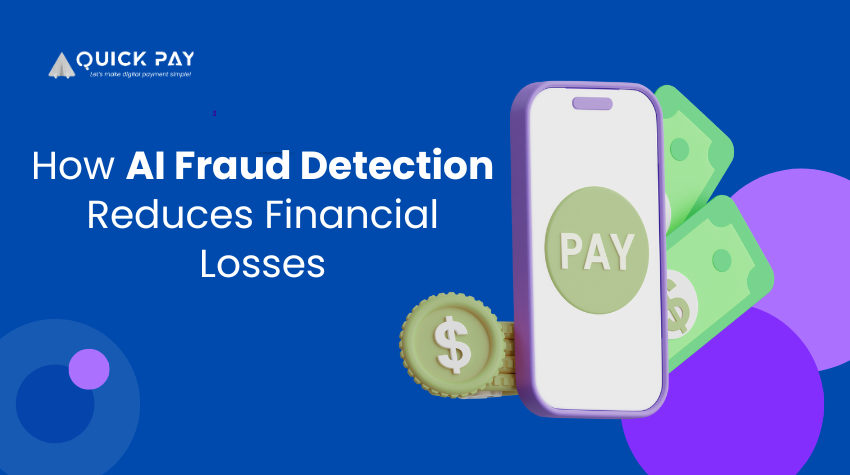The Complete Guide to Customizable Reports in Payment Gateways: Why Your Business Needs Smart Data
Running an online business means dealing with hundreds or thousands of transactions daily. But here's the thing - raw transaction data is like having a pile of receipts scattered across your desk. Sure, you know money is flowing, but do you really understand what's happening with your payments? This is where customizable reports in payment gateways become your business's secret weapon.
What Are Customizable Reports in Payment Gateways?
Think of customizable reports as your personal data detective. Unlike the basic reports that show you general information like "You received $5,000 today," customizable reports let you dig deeper and ask specific questions like:
- Which payment method (credit card, UPI, wallet) works best for my customers?
- What time of day do most transactions fail?
- Are customers from certain cities having trouble completing payments?
- How much am I losing to failed transactions each week?
A customizable report is essentially a flexible tool within your payment gateway that you can adjust to show exactly the information you need, formatted the way you want it, and delivered when you need it most.
Why Generic Reports Fall Short: A Real-World Example
Let's say you own an online clothing store. Your basic payment report might tell you:
- Total sales: $50,000
- Successful transactions: 847
- Failed transactions: 153
That's useful, but it doesn't tell the whole story. Now imagine if you could customize that report to reveal:
- 60% of failed transactions happen between 6-8 PM (peak shopping hours)
- Customers trying to pay via mobile wallets have a 25% higher failure rate
- Orders above $200 fail 40% more often than smaller orders
- Customers from tier-2 cities abandon carts when only credit card options are shown
Suddenly, you're not just seeing numbers - you're seeing opportunities. You might decide to offer more payment options during peak hours, optimize your mobile wallet integration, or provide installment options for high-value purchases.
The Business Impact: How Custom Reports Drive Real Results
1. Turning Data into Money-Making Decisions
Custom reports help you identify patterns that directly impact your bottom line. For instance, an electronics retailer discovered through their customized reports that customers aged 35-45 preferred bank transfers for purchases over $1,000, while younger customers abandoned carts when this option wasn't prominently displayed.
The solution? They created age-based checkout experiences, resulting in a 23% increase in conversion rates for high-value items.
2. Catching Problems Before They Become Disasters
Real-time customizable reports act like an early warning system. Imagine you're running a flash sale, and suddenly your custom report alerts you that payment failures have spiked 300% in the last hour. Without this insight, you might lose thousands in potential sales before realizing there's a technical issue.
3. Reducing Manual Work and Human Errors
Before custom reports, businesses often spent hours each week manually compiling data from different sources. Sarah, who runs a subscription box service, used to spend every Monday morning creating Excel sheets to track subscription renewals, failed payments, and churn rates.
Now, her customized reports automatically generate and email these insights every Sunday night. She starts each week knowing exactly which customers need attention, which payment methods are underperforming, and what her cash flow looks like for the upcoming week.
Key Features That Make Reports Truly Powerful
Smart Filtering and Segmentation
The real magic happens when you can slice your data in multiple ways. Here's how different filters work together:
Time-Based Filters: Instead of just "last month," you can analyze "weekday evenings vs weekend mornings" or "first week of each month" (when people have more money after payday).
Geographic Filters: Understanding regional preferences is crucial. A food delivery app might discover that customers in Mumbai prefer digital wallets, while those in Chennai prefer cash-on-delivery, leading to region-specific payment page customizations.
Customer Behavior Filters: Segment by new vs returning customers, order value ranges, or purchase frequency to understand how different customer types interact with your payment system.
Visual Data Representation
Numbers in spreadsheets are hard to interpret quickly. Custom reports transform data into visual stories:
- Heat maps show you which hours and days generate the most (or least) successful transactions
- Trend lines reveal whether your payment success rates are improving or declining over time
- Pie charts instantly show the breakdown of payment methods your customers prefer
Automated Alerts and Notifications
Smart custom reports don't just show you what happened - they tell you when something needs immediate attention. For example:
- "Payment failure rate exceeded 15% in the last hour"
- "UPI transactions down 40% compared to same time last week"
- "High-value transactions ($500+) have 30% more failures today"
Advanced Applications: Beyond Basic Reporting
Fraud Detection and Prevention
Custom reports can be configured to spot unusual patterns that might indicate fraudulent activity. For instance, multiple failed payment attempts from the same IP address, or sudden spikes in international transactions outside your usual customer base.
A jewelry retailer set up custom alerts for any transaction over $2,000 with a billing address different from the shipping address, combined with a payment method not previously used by that customer. This simple customization helped them catch three fraudulent orders in one month.
Customer Experience Optimization
Your payment reports can reveal friction points in the customer journey. If you notice that mobile users have higher cart abandonment rates specifically during the payment step, you know your mobile checkout needs improvement.
One fitness equipment company discovered that customers were abandoning purchases when asked to enter their card's CVV code, suggesting their mobile checkout form was unclear. They redesigned the form with clearer instructions and saw a 15% improvement in mobile conversions.
Seasonal and Campaign Analysis
Custom reports help you understand how different marketing campaigns, seasons, or events affect payment behavior. During Diwali, an Indian e-commerce site noticed that:
- EMI options became 3x more popular for purchases above ?10,000
- Digital wallet usage increased by 150%
- Payment failures increased during specific hours when network traffic was heavy
These insights helped them prepare better for the next festive season.
Real-World Success Story: How QuickPay Users Benefit
Let's look at how businesses actually use customizable reporting. QuickPay, an Indian payment gateway, offers merchants the ability to create detailed, tailored reports that go far beyond basic transaction logs.
Case Study: Online Education Platform
An online learning platform using QuickPay was facing high payment failures during course enrollment periods. Using QuickPay's customizable reports, they discovered:
- The Problem: 70% of failures occurred when students tried to pay for courses costing more than ?5,000
- The Pattern: Most failing students were using debit cards from regional banks
- The Timing: Failures peaked during the first week of each month
The Solution: They configured QuickPay's reports to automatically track payment method success rates and set up alerts for unusual failure spikes. They then:
- Added more payment options for high-value courses
- Partnered with regional banks to improve success rates
- Offered installment plans during high-failure periods
The Result: Payment success rates improved by 28%, and course enrollment increased by 35%.
Setting Up Your Custom Reports: A Step-by-Step Approach
Step 1: Define Your Business Questions
Start by identifying what you really need to know:
- Are you losing customers due to payment failures?
- Which payment methods work best for your customer base?
- Do you need better cash flow predictions?
- Are there fraud patterns you're missing?
Step 2: Choose the Right Metrics
Focus on metrics that directly impact your business goals:
- Conversion-focused businesses: Payment success rates by method, cart abandonment at payment stage
- Subscription services: Failed recurring payments, customer payment method preferences
- High-ticket retailers: Payment method success for different price ranges, fraud indicators
Step 3: Set Up Automation and Alerts
Configure your reports to work for you automatically:
- Daily morning reports with yesterday's key metrics
- Weekly trend analysis sent every Monday
- Immediate alerts for unusual patterns or failure spikes
Step 4: Create Role-Based Access
Different team members need different information:
- Finance team: Settlement timing, reconciliation data, fee analysis
- Customer service: Failed payment reasons, refund processing status
- Marketing team: Payment method preferences by customer segment
- Management: High-level trends and performance indicators
Making the Most of Your Investment
Integration with Business Intelligence Tools
Custom reports become even more powerful when integrated with your existing business tools. Export data to Excel for detailed analysis, or connect with business intelligence platforms like Power BI or Tableau for advanced visualization.
Regular Review and Optimization
Your business evolves, and so should your reports. Schedule monthly reviews to assess:
- Are you still tracking the right metrics?
- Have new business needs emerged that require different reports?
- Are your alerts helping or overwhelming your team?
The Future of Payment Gateway Reporting
Emerging technologies are making custom reports even smarter:
AI-Powered Insights: Instead of just showing you what happened, AI can predict what's likely to happen and suggest actions. For example, "Based on current patterns, you're likely to see a 20% increase in payment failures this weekend due to the holiday. Consider promoting digital wallet payments."
Voice-Activated Reporting: Imagine asking your payment system, "How are my UPI transactions performing this week?" and getting instant insights without logging into any dashboard.
Conclusion: Your Next Steps
Customizable reports transform your payment gateway from a simple transaction processor into a strategic business intelligence tool. They help you understand your customers better, catch problems early, and make data-driven decisions that directly impact your bottom line.
The businesses thriving in today's competitive market aren't just processing payments - they're leveraging payment data to optimize customer experiences, prevent fraud, and drive growth.
Start by identifying your most pressing business questions, then configure your payment gateway's reporting tools to provide those answers automatically. Remember, the goal isn't to have more data - it's to have the right data, presented in a way that drives action.
Your payment gateway holds a treasure trove of insights about your business and customers. Custom reports are the key to unlocking that treasure. The question isn't whether you can afford to invest time in setting up custom reports - it's whether you can afford not to.
















